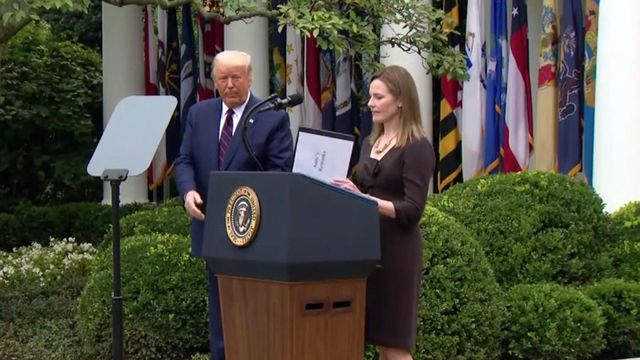White House ceremony now linked to at least 8 coronavirus cases
As the cluster of infections in the White House grows, so does the focus on the Sept. 26 ceremony where Trump nominated Judge Amy Coney Barrett for a seat on the U.S. Supreme Court - the "superspreader" event where many of the people now with coronavirus were seen together with little social distancing and no masks.
Posted — UpdatedA superspreader event is where one person’s infection results in multiple secondary infections. Doctors say it’s not really clear what makes someone a superspreader but urge people to protect themselves by following what have become familiar guidelines in recent months: wear a mask, keep at least 6 feet of distance from others and keep interactions with people short.
Health experts say the White House event failed on all fronts.
"Having even an outdoor gathering where chairs are put shoulder to shoulder is too close contact, for sure," said Emily Sickbert-Bennett, director of infection prevention at UNC Medical Center in Chapel Hill.
When asked about Tillis going without a mask at the White House, a spokesman said Monday that the senator was tested for the virus two hours before the event. In announcing his positive test on Friday night, Tillis urged people to wear masks to protect themselves and others.
"The reason we are all wearing masks and taking all these precautions is because we can’t wait until we have symptoms to be careful. We’re shedding virus before we have symptoms," said Dr. Thomas Holland, associate professor of infectious diseases at Duke University Hospital.
"You can assume that anyone could be infected, even if they are feeling well," Sickbert-Bennett said.
A combination of biology and behavior means the "majority of infections are caused by a small group of people," she said.
Some people are more contagious with a higher viral load – more virus per droplet – and others spread it farther by things like talking louder. But they also need to be close enough to others to transmit the virus.
"The mask is our best protection to both contain our own secretions, if we are the person who has the high viral load, and if we are coming into contact with other people who could be infectious. It serves a dual purpose in that way," she said.
Related Topics
• Credits
Copyright 2024 by Capitol Broadcasting Company. All rights reserved. This material may not be published, broadcast, rewritten or redistributed.






